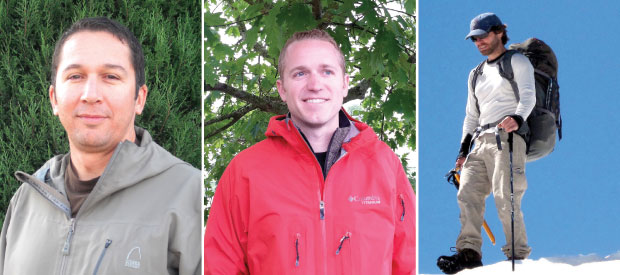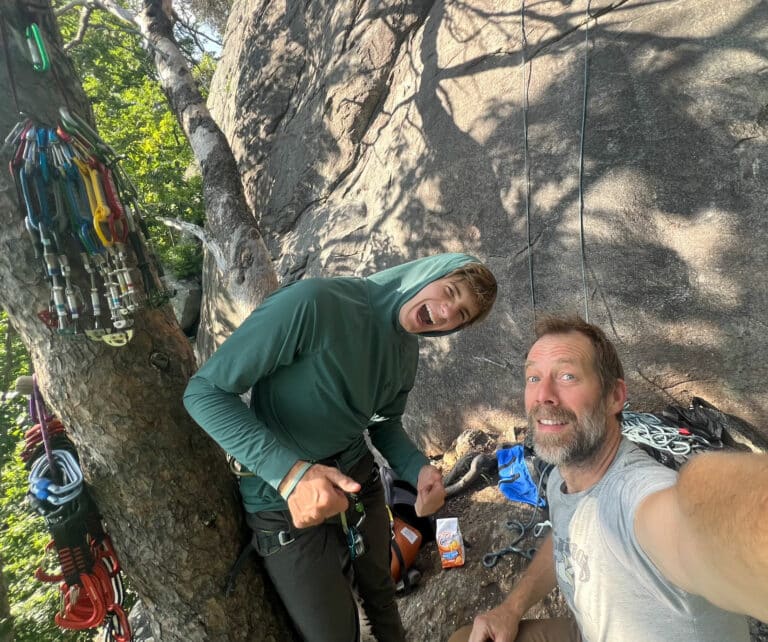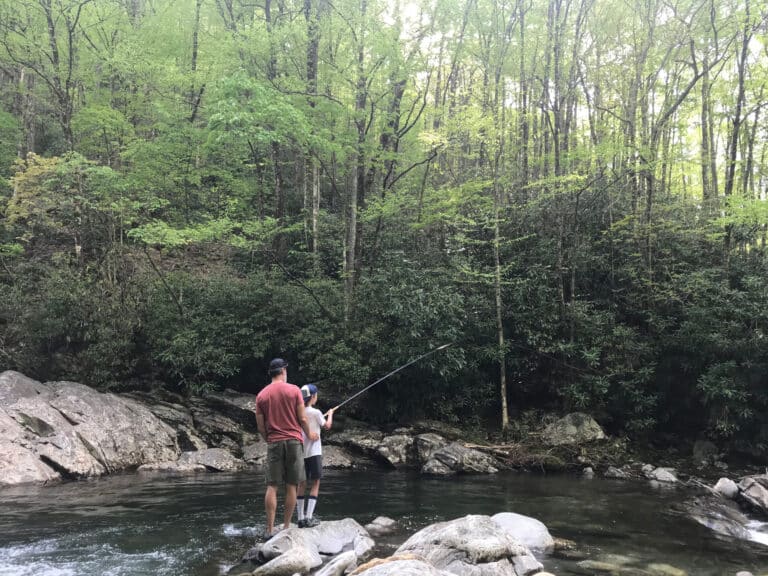From l to r: Sierra Designs’ Vincent Mares, Columbia Apparel’s Bryhn Ireson and Black Diamond Packs designer Nathan Kuder.
![]()
For every backpack that summits the Southern Appalachians, there’s a really smart gear designer working long hours in a dark office to make sure it has all the bells and whistles it needs to get the job done. Ditto technical apparel and tents. BRO pulled a few of the outdoor industry’s leading designers out of the their cubicles and let them speak about gear design. Here’s what they had to say.
Vincent Mares, design manager for Sierra Designs packs, tents, and sleeping bags.
The goal whenever you create a new pack or tent or sleeping bag, is to answer a question in a better way. Are we solving problems for the users, not just creating another option in a different color?
Failure is part of the process. We go through a bunch of design concepts to create an idea for a pack, then we build the first prototype. But you never get it 100 percent perfect. There are lots of growing pains along the way. It’s more of an evolution than people probably realize. You have to fail to succeed. You have to learn from it.
The future for tent design is the same as the past: lighter, lighter, and lighter. In tents, every ounce counts. There are some new fabrics coming out that are amazing. It will give tent designers some interesting options. We should be able to build something extremely light without sacrificing performance.
I live in the future. I have this crystal ball, thinking two years in the future, thinking about economics, color trends, innovation. It’s part science, part voodoo. These are the things they don’t teach you in design school.
Bryhn Ireson, product line manager for Columbia’s technical apparel line
I look at the market, examining a competitor’s set: the price, features, colors, how waterproof it is…then I approach a specific piece from our perspective. For us, it’s about the end use, providing something comfortable and usable. But a product begins when I write a brief on an idea I’d like to see built, then I let the designers go at it.
Typically, it takes 18 months to get a piece of apparel from the brief to market. It takes that long to nail the process. Longer if there’s an innovative technology involved, like Omni Freeze Ice. We knew about the technology and spent a lot of time testing with our innovations department before we started to design specific pieces. It took a matter of years. Right now, we’re looking at developing products for spring 2013.
Basically, we’re predicting the future. It’s tough with color trends. Our design department can be pretty fashion forward. Will we be ready for these color schemes in 2013? How will we price items for 2013? There’s some educated guess work, but it pays to be the leaders too, so you’re driving the market, not responding to it.
We have an extensive beta project that spans the world with hundreds of real life users chipping in to test gear. They don’t pull any punches. We have guides as well spending 200 days a year giving us so much feedback and direction, from color to technical traits. We take those comments from the Beta project, then apply them to the product before we go to market and use them for future development.
Nathan Kuder, category director for packs for Black Diamond
With any piece of gear, the goal is to make that gear disappear from your experience. The concept behind our Active Frame Technology in our packs’ suspension systems, was to take away some of the restrictions that traditional packs have had on the backpacking experience. People have just assumed that a certain amount of discomfort and limited mobility come with large packs.
I’m a firm believer that active suspensions will become as common as internal frames are now. Right now, 90 percent of the packs on the market have static suspension. But eventually, you’ll see those become the price point options, and active suspension be the more common option. It’s simply too good to not be adopted by more backpack manufacturers.
I’d say 80 percent of the stuff on the store floor has an element of gimmickry. The end user is my yardstick. If the user doesn’t get what they paid for, the product won’t stick around. At Black Diamond, we’re always asking, “Is this real, or is this bullshit?”








